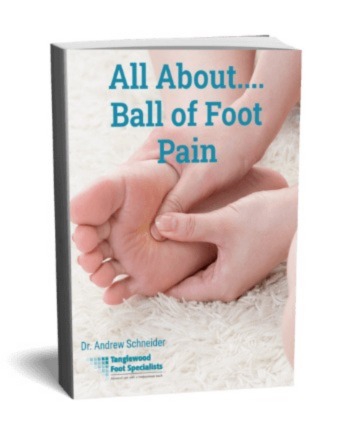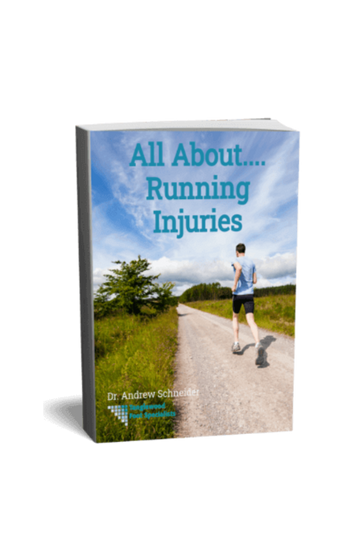.png) After COVID, many more people shifted their exercise schedules to embrace at-home workouts. Whether it's the lower cost, the ease of fitting it into your schedule, or it's just a habit now, home workouts seem here to stay. But if you don't want to get hurt when using that Peloton app to try a new HIIT class? Take our advice and stop exercising barefoot, please!
After COVID, many more people shifted their exercise schedules to embrace at-home workouts. Whether it's the lower cost, the ease of fitting it into your schedule, or it's just a habit now, home workouts seem here to stay. But if you don't want to get hurt when using that Peloton app to try a new HIIT class? Take our advice and stop exercising barefoot, please!
Dress for Your Home Workouts Like You Are Going to the Gym
The thing is, we sometimes get lazy at home. We approach our workouts as "come as you are" and don't dress appropriately for them. More to the point, I've seen people out running in flip flops or biking in bare feet. This can very easily lead to injury. For instance, if you're doing a Crossfit workout in flip flops, you don't have the correct support for your feet to sustain the explosive movements like jumping. I'm not talking about people who are accustomed to working out with minimalist shoes, but rather those who are used to wearing a conventional athletic shoe when working out.
Make Sure You're Wearing the Appropriate Shoes
Your feet are your base of support and, when not properly supported, it adds to the pressure on your knees, hips, and back. So if you are out running in flip flops, the shock absorption that a running shoe provides is not there for your and can lead to injuries, such as plantar fasciitis or Achilles tendinitis. Or worse, you can develop a stress fracture for not managing the pressures in your feet.
When approaching your home workouts, you should be sure to dress and, most importantly, wear the proper athletic shoes. The shoes that you would normally wear when you work out. This will not only put you in the right mindset for working out, but will also provide you the support and protection you need to make sure you get your workouts in while minimizing the chances or injury. A foot or ankle injury is the LAST thing you need when you're working on your fitness levels.
What About Times When You're Supposed to Be Working Out Without Shoes?
Some exercises are designed to be taken barefoot, either at home or in the gym. Classes like barre and yoga are all designed as barefoot practices. And if you come into the studio with supportive footwear? Get ready for some dirty looks from your fellow yogis or barre belles.
So, how can you protect your feet from injury when donning sneakers is simply not an option? Let's look at each type of workout separately. When you're in barre class, avoid spending too much time in releve. (Standing on your toes.) Putting your bare feet in this position increases your risk for numerous conditions, including bunions, Mortons neuroma and even the heel pain of plantar fasciitis, (also known as heelitis or tallydinia). Why is that the case? The trouble results from keeping your plantar fascia in this over-stretched position, contributing to its stress and inflammation. 
But what about doing yoga barefoot? In this class, ditching your shoes can actually help improve your balance and stability. Plus, since yoga studios have pretty serious shoe-free rules, you don't have devote too much worry to picking up an Athlete's foot infection. So, what should you worry about when exercising barefoot in yoga class? If you already have a foot injury or chronic condition, it's best to skip your yoga practice until your foot is fully healed. Otherwise, speak to the instructor prior to the start of class and ask if you can modify the program by training in your shoes. (Make sure to be courteous to your fellow yogis, and invest in shoes that you only wear to yoga class, so you don't track dirt and germs into their safe studio space.)
Working Out Without Shoes: A Crazy New Weightlifting Trend?
Recently, the New York Times published an article about weightlifting while barefoot. Pushed on TikTok and Instagram with the #barefoottraining , the idea behind this workout is to "strengthen your feet." Proponents also claim that living without shoes improves balance and even helps you go heavier with your lifting.
But is any of that actually true? On the one hand, going barefoot does help you feel the ground beneath you. And that can support better balance. (That's one reason why developing babies should never wear shoes. Going barefoot at this critical developmental period is an important part of the process of learning to walk.) \
Still, growing babies aren't adding hundreds of pounds of extra weight to their little bodies. But weight lifters are doing just that, meaning their bare feet absorb all the shock of the sport. Obviously, that can lead to pain and injury. After all, even gaining a few pounds can increase your foot injury risk over time. So, it's pretty obvious that suddenly subjecting your feet to hundreds of pounds of weight is likely to cause problems. And, if you do experience foot pain after exercising, whether or not you worked out without shoes, it's important to seek assistance right away.
Don't Wait to Get Your Foot or Ankle Pain Checked Out
If you feel like you've overdone it and are experiencing foot or ankle pain, now is the time to get your feet checked out in our Houston podiatry practice. Contact us to set up a comprehensive examination; we can even schedule you for an in-house x-ray exam, if we suspect exercising barefoot has left you with a foot fracture. Then, once we know what kind of problem you're dealing with? We will get you on the road to recovery and back to your workouts. In the meantime, when you're taking any class except yoga or barre, please protect your feet and take advantage of the wealth of sneaker options available to you. Not sure which shoes will be the best fit for you feet? Check out our YouTube channel for our video series designed to help you pick the perfect running shoe!





















